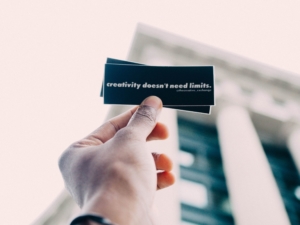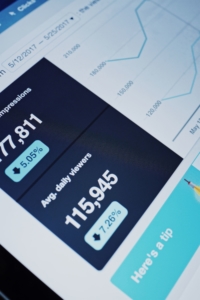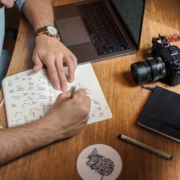Has Digital Marketing Killed Off Branding & Creativity?
How has digital marketing affected branding? Q&A with Chris Bullick, MD of The Pull Agency.
Bill Gates – somewhat belatedly – said ‘The Internet changes everything’. In reality, Microsoft was late to the party but Gates nailed it just in time. But has the Internet really changed everything for marketing? The way in which services and products are promoted and sold may be different, but are the fundamentals still the same?
I interviewed Chris Bullick, Managing Director of The Pull Agency (which has just changed its name from Pull Digital). The agency creates brand propositions, websites and campaigns for clients that are challenger brands wanting to ‘out-think rather than out-spend the competition’.
CG: So Chris, has – as Gates proclaimed – the Internet really changed everything?
CB: Having started my career on the branding side when at P&G, and therefore having been around pre-Internet, I’ve always been intrigued by people saying that brand is dead … it’s all about Google and Search … anybody can start a dot.com business … long-term brand building no longer applies. The question, for me, is to what extent that’s proved to be the case and what’s the real impact of the digital revolution on the world of marketing and advertising.
I believe that, for a while, businesses felt that all that was needed for marketing was an army of geeks: I think that approach has been disproved. To my mind, the way digital has played out has proved that everything leads back to brand and that brand is still key.
CG: If a client contacts you for help with digital marketing, would you encourage them to let you evaluate their brand first of all?
CB: A lot of potential clients approach us because they think digital marketing will wave a magic wand or it’s a shortcut. My argument will always be that whatever you do will be much better applied if you get your brand into shape first. So we will always try to undertake an audit of a client’s brand and break that down into several components to understand what the brand narrative is, what’s the awareness like, how good the brand promise and proposition are, etc., etc. There’s really no point embarking on a marketing programme if those things aren’t in good shape.
CG: With so much focus on attribution and programmatic solutions these days, how do companies look to measure their return on investment? Do they want to rank at the top of Google or measure ROI in other ways?
CB: Marketing has been always been science and art. People think building a brand is a largely creative process, but creative is just a way to address something and solve a problem. You have to prove that what you do positively impacts on the client’s bottom line – and that’s enabled by digital marketing.
The old joke used to be that 50% of your marketing works and 50% doesn’t, and you don’t know which is which. But that’s changed and digital marketing lets you measure accurately – whether it’s attributing sales to an e-commerce client or getting leads. If it’s B2B, you can measure back to the source (so, where does that come from?). If it’s organic, what keywords are responsible? If social media, which platform? You really can find the answers to those questions nowadays.
The art side is still leveraging your intuition; it’s bringing creativity to bear, it’s impacting the emotional pull the brand can have on the consumer. But what digital marketing allows you to do is the truly scientific part. Even when working with a client on brand building, you need to agree on a whole set of cold-blooded metrics – it might be sales, it might be ROI, it might be cost-per-acquisition, which comes from sources like Google analytics. The latest buzz phrase is ‘big data’ – if you collect enough data and use enough processing power, you can find the answers to everything. But I feel that approach is being discredited: again, it suggests that if you have enough processing power you don’t need experienced marketers. I’m not sure I buy into that.
There’s a soft creative side to brand building based on the fact that human beings are irrational and subject to emotional responses, and there’s a scientific side which the digital revolution has fully enabled. If you’re managing a brand well, then you’ve got to have a pretty good grip of both sides.

CG: Has measuring digital marketing caused creative work to suffer? Are advertisers and companies less adventurous?
Yes, I think marketing went through a period – the first stage of the digital revolution if you like – where geekiness and techno-crats moved in and which devalued things like copywriting and creativity. But people are now seeing the power of creativity again as technology falls to the background slightly. Clients are still looking for that emotional pull. Think about, say, the eagerly awaited John Lewis Christmas TV ads. That pull can only come out of creative work: it doesn’t come from analytics.
CG: What are the major differences you’ve noticed about how digital marketing has affected branding?
The really big thing I’ve seen is how brand search has increased around tenfold in the last ten years compared to generic search. Everything’s been turned on its head.
Take Wiggle, the UK’s largest online provider of sports kit – especially cycling. Ten years ago the ratio of search for the phrase ‘bicycle parts’ versus ‘Wiggle’ was 10:1 in favour of ‘bicycle parts’. Today, the ratio of search for Wiggle as a brand is 10:1 versus ‘bicycle parts’.
So, ten years ago, if you wanted to build a business on the basis of that type of Google search result, you did everything you could to be in the number one slot for bicycle parts. You’d probably start a business called bicyclepartsonline.com and maybe even deploy so-called ‘Black Hat’ SEO techniques to reach and hold that number one search slot.
However, people have now found their favourite online brands – and search for generic items has been replaced by search for brands. For consumers now, the brand name ‘Wiggle’ is synonymous with ‘bicycle parts’ so they simply type in ‘Wiggle’. Although Wiggle has invested in SEO, they’ve put their real effort and investment behind building the brand. That’s why they’re number one in their category.

CG: How has that affected Wiggle’s marketing spend?
The majority of Wiggle’s revenue will now come from brand-related search, and they bid on their own brand term in paid search. Type in ‘Wiggle’ and the first result you see is a big Google ad from Wiggle. Now it may be that half the consumers searching with Wiggle-related terms are clicking on that. The result next down from that will be the organic search result. It may seem counter-intuitive that you’re forced by Google to spend on your own brand, but the reality is that the cost-per-acquisition (getting a sale from someone clicking on the Wiggle ad) is probably 30p or 40p. The cost-effectiveness of this dilutes the cost of bidding on generic search terms, so the overall cost per acquisition or ROI is much lower than that of competitors with weaker or less searched-for brands.
So the latent value of a brand can be indicated better by what used to be the slightly vague term ‘brand equity’, which was notoriously difficult to measure. Now, all of a sudden, you can measure that – it’s a massive turnaround. For Wiggle, it means they can afford to spend an awful lot more on non-brand terms such as ‘bicycle parts’ because the fantastic ROI they get on a brand-name sponsored search pays for all their other advertising on Google. That’s a perfect example of brand value.
CG: Lastly Chris, any predictions for the future of digital marketing?
CB: In the last year alone, I’ve seen Facebook come forward to challenge Google in a whole load of ways that I didn’t necessarily expect. I think that Facebook, because of the way in which it profiles people, is getting stronger by the day. Google may be very good at profiling people’s intentions, but it’s not so good at understanding them as individuals.
About the author: Caroline Gibson





Dear Caroline,
Thank you!
Alan